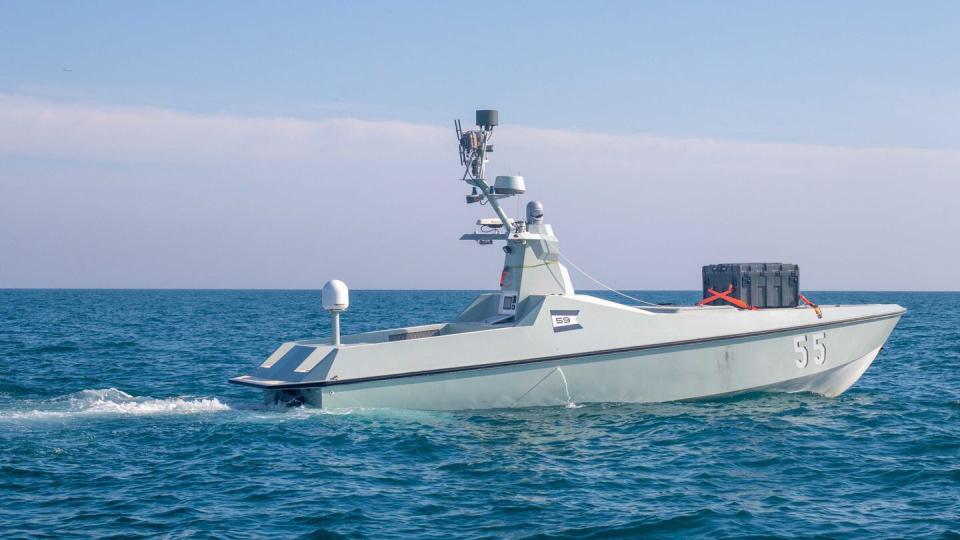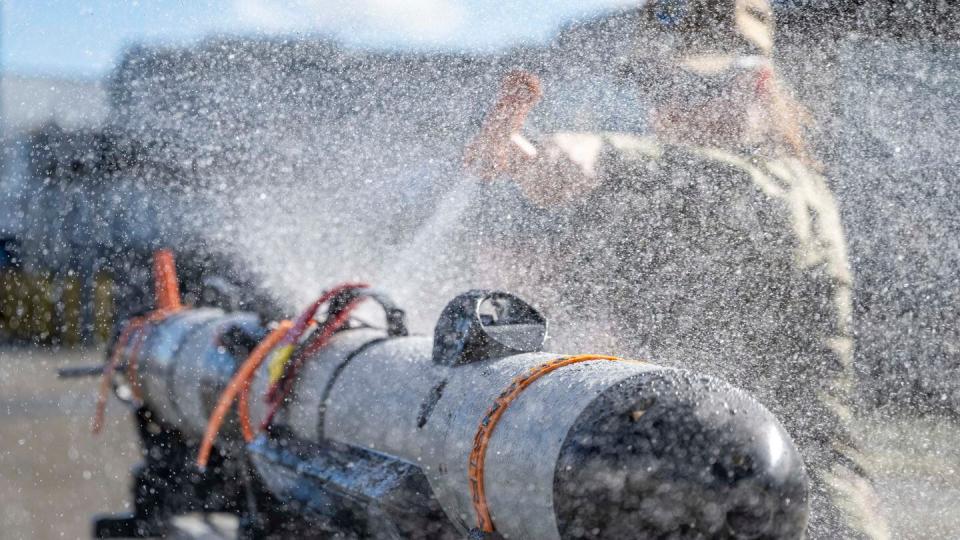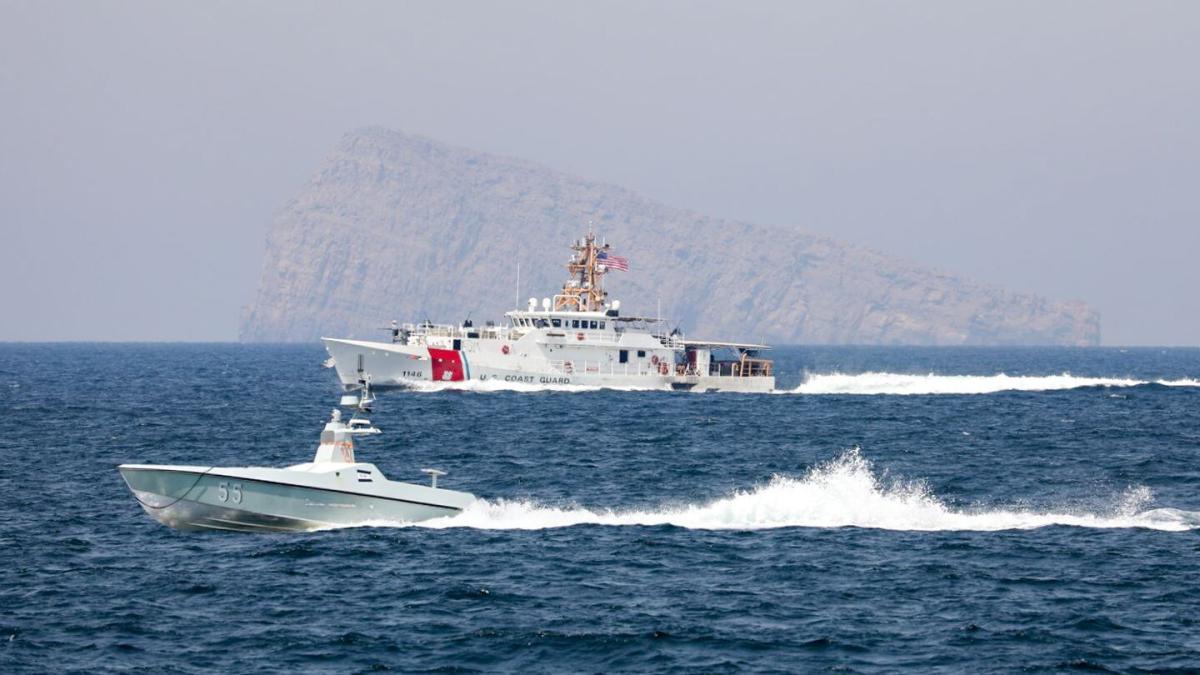The U.S. Navy’s message to the industry is clear: the service is committed to the acquisition and operation of small unmanned systems on and under water.
What’s less clear is how the Navy will obtain them and with what funding — but one company says it’s moving forward with developing disruptive systems now and will figure out the business model later.
Jon Rambeau, L3Harris president for Integrated Missions Systems, told Defense News that the company had already done a number of one-off efforts with the Navy — two of its Arabian Fox autonomous surface ships are operating out of Bahrain as part of the U.S. 5th Fleet Task Force . 59, and L3Harris successfully demonstrated the ability to launch and recover an unmanned underwater vehicle, or UUV, from the torpedo tube of a submarine.
However, in none of these cases did the company actually sell its unmanned system to the Navy.
Rambeau said he views these opportunities – through fee-for-service contracts or declarations of urgent operational needs – as a start to paving the way for future procurement of small unmanned systems.
The Pentagon’s Replicator program will also help, he said. But of course we “always want things to go faster.”
Rambeau said his company is focused on moving fast. L3Harris integrates commercial sensors on commercial unmanned underwater and surface vessels where lead times for large warships are “weeks or months, versus years.”
In addition to looking for ways to sell a small quantity of UUVs to the submarine fleet that will begin operations this year, Rambeau said L3Harris provides the Navy with a passive sensing and targeting capability that can be installed on an unmanned surface vessel, or USV . and sent ahead of a manned ship, allowing it to keep emissions low and avoid becoming a target itself.
Rambeau said the cost of this payload and USV is a budgetary “rounding error, compared to a ship or a combat system or a large active radar array. These are very affordable technologies that can really complement what already exists today. So we see it as complementary, we see it as a bit disruptive, and it’s exciting.”
But in some ways the small cost makes it difficult to get anyone’s attention, he acknowledged.
“The costs of these options are minimal. The budgeting discussions tend to focus more on the bigger, more expensive items, and so we make sure that we pay at least a little attention to these things and that there is an opportunity to tackle that extra funding year after year to to pass by. proof of concept in low production quantities,” is something he has discussed with the maritime service.

Rambeau said these discussions at the flag officer level have gone well, with agreement on both sides about the utility of small unmanned systems and the desire to purchase them. They haven’t gotten to the point where the Navy has jumped several hurdles and actually bought them.
U.S. Undersecretary of the Navy Erik Raven told Defense News the week the service released its fiscal year 2025 budget request in March: “What you’re really seeing is an ecosystem of how the Department of the Navy is beginning to embrace unmanned technologies. We’ve learned a lot through initiatives like Task Force 59, and … we’re starting to bring that learning to bear on how we can adapt unmanned technologies, and how we can scale them up as well.”
Depending on the possibilities, some ‘more sustainable priorities’ could become programs that can be sustained over a longer period of time. Others may be things that the Navy buys in limited quantities to use and then replace with another system, to ensure that it “gets the best out of what comes out of the industry, and then is able to iterate and to move faster.”
Although Raven called this area of technology a “major strategic advantage,” the Navy could not provide details in its FY25 budget proposal on how much it plans to spend on small unmanned systems.
Raven told reporters in March, when he unveiled the budget request, that two large unmanned systems were delayed in the budget plan, but that small unmanned systems would be funded through the funding.
“We continue to see unmanned as a hallmark of so many important maritime capabilities, and we are making those investments in this budget,” the undersecretary said.
Seven weeks after Defense News filed a request asking about the nature of those investments, a Navy spokesperson did not provide totals.
Instead, the spokesperson said: “The Navy continues to invest in registered unmanned systems programs and emerging operational needs in the air, surface and submarine domains as part of the [FY25] President’s Budget Request.”


The statement highlights two programs: the Lionfish UUV program, which will replace the MK 18 Mod 1 Swordfish used by the explosive ordnance disposal community; and the Production Ready, Inexpensive Maritime Expeditionary (PRIME) Commercial Solutions Opening (CSO) collaboration with the Defense Innovation Unit under the Replicator initiative.
“Overall, the Navy’s investments in unmanned systems for FY25 continue to increase as we learn and experiment with unmanned capabilities across the fleet and position ourselves to enter production,” the spokesperson concluded.
For companies like L3Harris, the details may be lacking, but the sentiment is enough.
“We move quickly, we already produce some components of these systems on a fairly large scale, so we are ready when the call comes,” said Rambeau.







